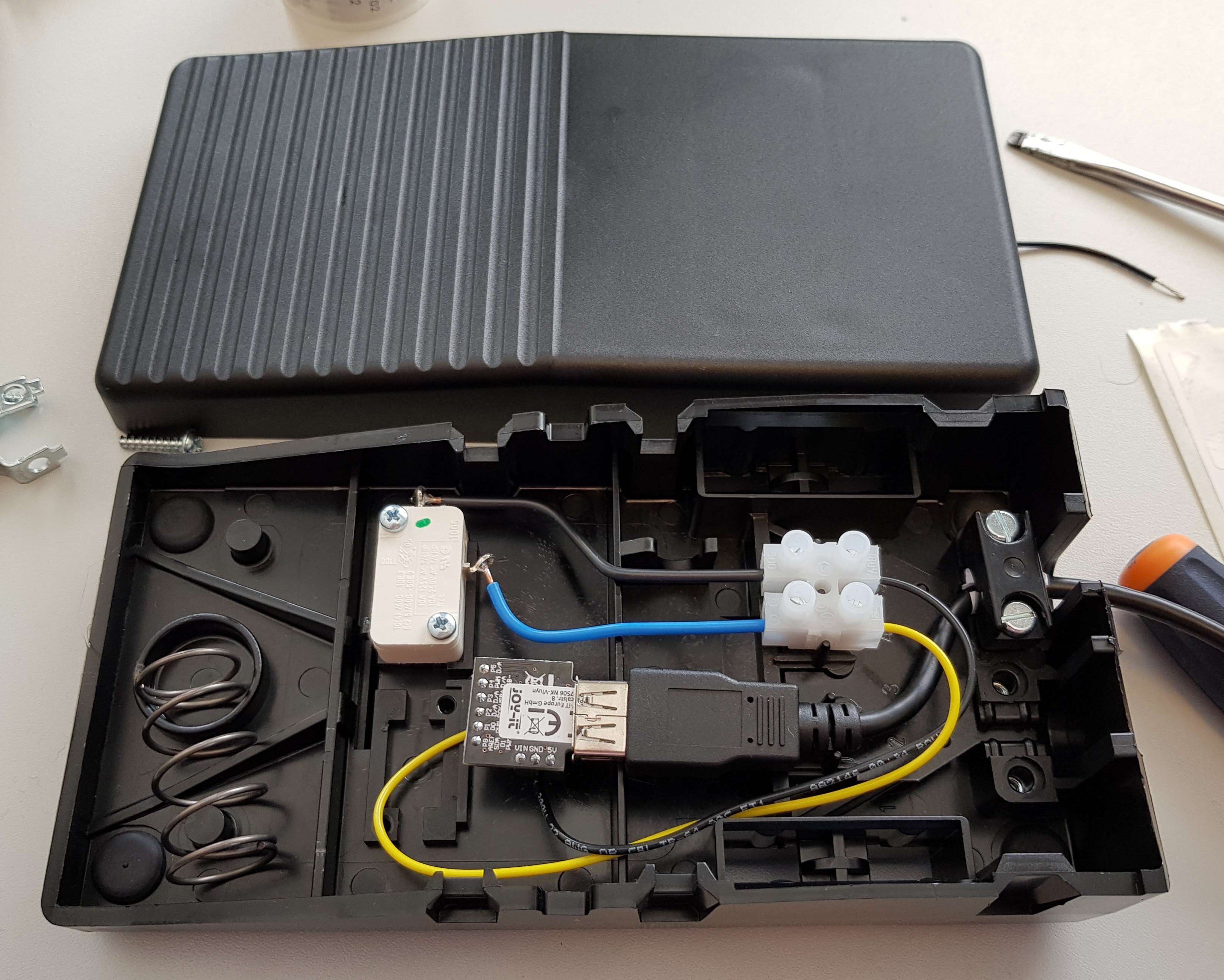-
1Get the components
Good news: it's 2018 and all we need is easily source-able. You will also need a screwdriver for assembly. A parts list with example parts is provided on the project page.
-
2Wire stuff up
2nd good news: two jumper wires suffice. No need for soldering. Just use the screwdriver (see step 1 ;)) and replicate what is seen on the image here.
![]()
- Open pedal
- connect USB extension cable to Digispark
- connect jumper wires to terminal block
- connect jumper wires to Digispark: black wire goes to GND, yellow to P2=D2 (or change the sketch in step 3)
- Close it
-
3Install the sketch
Now, this is what we want: every kick is a single key press (press+release) of the delete key (better: back-space, key code 0x24; yes, I am on a Mac).
// Public domain #include "DigiKeyboard.h" const int LEDA=0; const int LEDB=1; const int BUTTON=2; void setup() { pinMode(BUTTON,INPUT_PULLUP); pinMode(LEDA,OUTPUT); pinMode(LEDB,OUTPUT); } void loop() { while (digitalRead(BUTTON)==HIGH) DigiKeyboard.delay(10); // <- important to have USB stuff still running in BG. digitalWrite(LEDA,HIGH); digitalWrite(LEDB,HIGH); DigiKeyboard.sendKeyStroke(0); DigiKeyboard.sendKeyStroke(0x2A); DigiKeyboard.delay(100); while (digitalRead(BUTTON)==LOW) DigiKeyboard.delay(10); digitalWrite(LEDA,LOW); digitalWrite(LEDB,LOW); DigiKeyboard.delay(100); }Some comments:
- I use quite some debouncing delays.
- The while loop waiting for the pedal press really needs to call a DigiKeyboard.delay to make sure that USB is not stalling.
Upload using the instructions here: https://digistump.com/wiki/digispark/tutorials/connecting
-
4Delete stuff
Whenever you feel the need to expressively delete things, press the pedal. Gives some relief.
E-mail delete pedal
It's not a hack. It's arduino based. But, it's mental medicine. Introducing the kick-it-to-delete-it gesture.
 magnustron
magnustron
Discussions
Become a Hackaday.io Member
Create an account to leave a comment. Already have an account? Log In.